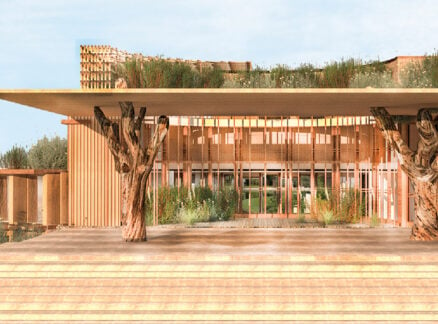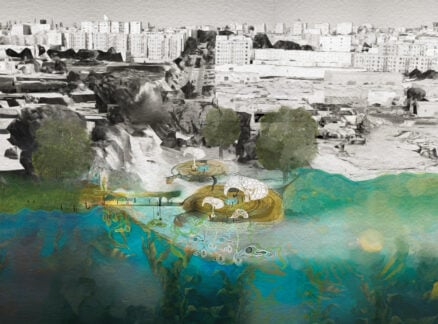
June 17, 2021
Curioso’s Residential and Hospitality Projects Take Root in Their Place
From Lake Michigan to the Yucatán, the Chicago interior design firm is reshaping the hospitality landscape with an emphasis on local character.

When Nina Grondin, who cofounded Chicago-based design firm Curioso with partner Daniel Pierce in 2013, describes the origin of the firm’s name, she says it is as straightforward as it seems. “Curioso is ‘curious’ in Spanish. We think it’s an important trait for designers, to simply stay curious and constantly ask questions.”
The firm has now grown to a staff of more than 20 design experts; a huge part of that expansion came after the start of Curioso’s partnership with Atelier de Hoteles, a developer based just north of Cancún, Mexico, on the Yucatán Peninsula. The project, luxury resort Atelier Playa Mujeres, was a huge step for the firm, with 600 guest rooms, 15 restaurants and bars, the Nuup Spa, and a convention center; the scale of the job was the catalyst for a new office in Mérida, the capital of the state of Yucatán.
“The client had asked us to be present in the area to help to implement the project,” Grondin says, so they set up shop in Mérida and soon grew that studio to more than ten people. Sensitivity to the spirit of the place drove Curioso’s design decisions for Atelier. “We have a good sense of the responsibility for where we’re pulling the materials, the fabricators, the contractors. We want to know that things aren’t being shipped across the world, that they really are coming from the local area,” says Curioso designer Katrina Hoernig. For Atelier, that meant locally sourcing furniture, handwoven textiles, and even the plaster used throughout the project—an authentic Mayan formula called chicum.

of style and authenticity. Courtesy Daniel Kelleghan
This commitment to rooting projects in their surroundings— particularly through materials, furnishings, and finishes—persists when Curioso works closer to home. For the Germain House Residences, a multifamily residential building housed in a former Chicago tannery, the firm chose to use well-worn leather for furnishings and signage, and selected blond wood to complement its richness and contrast with the architecture’s industrial skeleton. The designers also left much of the building’s interior brick exposed, bringing the material history of the site to the surface. And, Hoernig explains, most of the furniture was sourced from local Chicago companies: “It really ties you back to the place.”
An upcoming project, the Harbor Grand Hotel in New Buffalo, Michigan, on the shores of Lake Michigan, is equally rooted in geographic place. Owned by a husband-and-wife team, who were among Curioso’s first clients, the hotel suffered the unlikely fate of being struck by lightning in late 2019 and had to be gutted. “We were able to take that as an opportunity to help our clients reposition that project, not just to softly renovate here or there but create a whole new vision for the Harbor Grand,” Grondin says.

to participate in.” Courtesy Curioso
Curioso had already worked on a restaurant within the Harbor Grand, called Terrace Room, bringing rich textures like leather and velvet to complement the building’s craftsmanship and detailing. The renovation of the hotel presented a chance to double down on this link with the architectural history of both the building and the American Midwest, while making that heritage more appealing to contemporary guests. “We created a front porch, we expanded the entry, we painted the building from a drab beige to a deep blue, we redesigned everything in the guest rooms, and we’re working on a new spa,” Grondin says.
While Curioso’s focus on connecting a project to local context will appeal to visitors, behind it is also an understanding that employing local labor, manufacturers, craftspeople, and makers has a real, tangible effect on the health of a community. In Hoernig’s words, “It’s about keeping the resources within the community itself.” Grondin says that the Harbor Grand brought dozens of new jobs to New Buffalo, something that the city was hurting for during the COVID-19 pandemic. The project opened in January, and the firm plans to continue to foster its connection with the place, keeping close tabs on how the design works for its users. As Grondin says, “A project doesn’t end the day the doors open”—and neither does the firm’s curiosity.
You may also enjoy “Three Adaptive Reuse Projects in North Carolina Reinvent Historic Mills”
Would you like to comment on this article? Send your thoughts to: [email protected]
Register here for Metropolis’s Think Tank Thursdays and hear what leading firms across North America are thinking and working on today.












